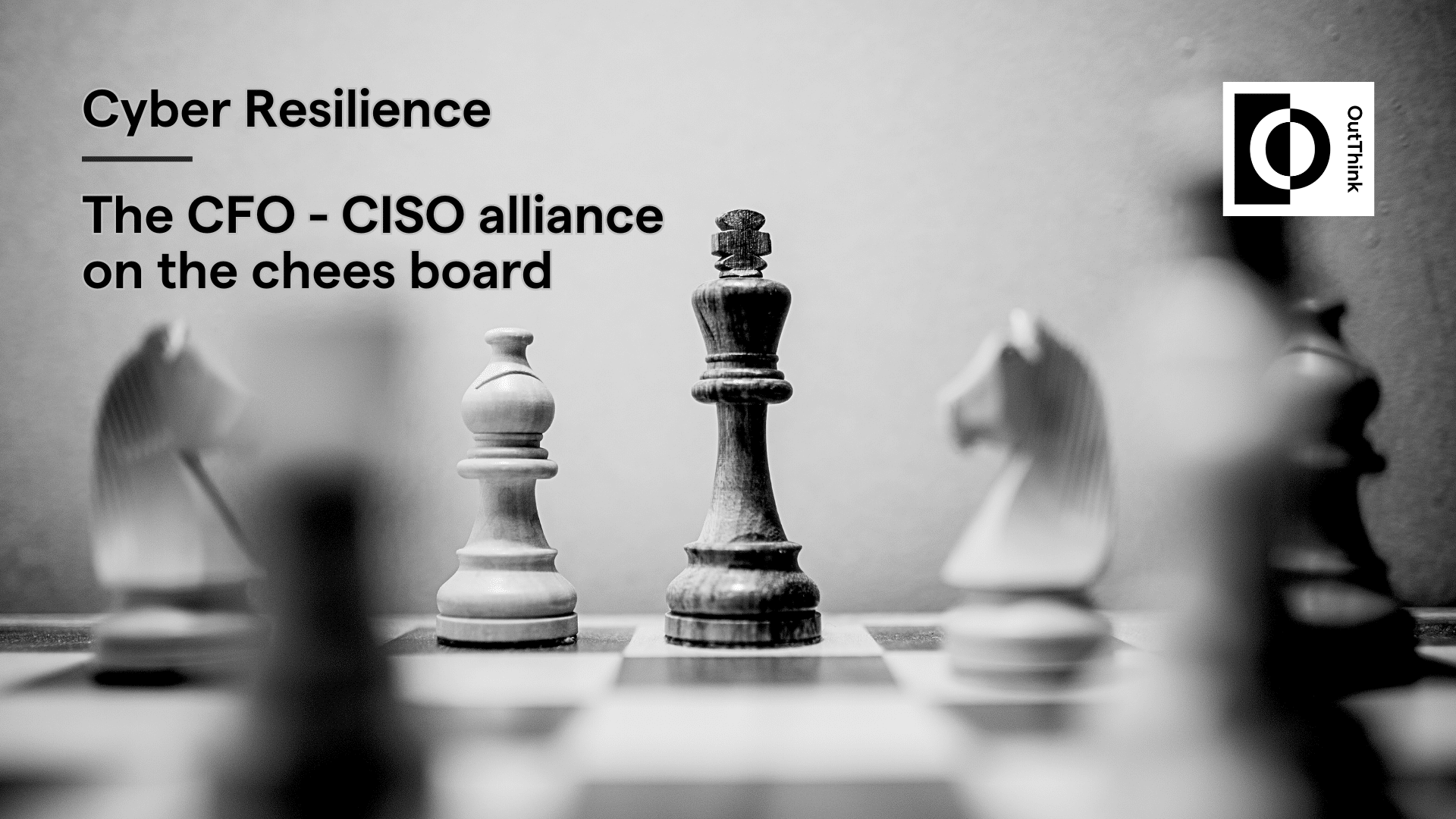By Kanav Bhama, VP Finance, OutThink & Flavius Plesu, CEO, OutThink
Recent research conducted by IBM concluded the global average cost of a data breach in 2023 was USD $4.45 million. With such significant financial risk at stake, cyber threats are increasingly becoming a top priority for CFOs.
75% of the 60 finance leaders we’ve spoken with in the past 4 months identified cyber risk as a top three priority, but many acknowledged not knowing where to start. Establishing a strong partnership between the Chief Financial Officer (CFO) and Chief Information Security Officer (CISO) as two critical business leaders is the foundation for building cyber resilience and a proactive cybersecurity approach. In this article, we share a few tips for the CFO and CISO to work harmoniously and effectively together.
Aligning with the North Star
The foundation of a successful CFO-CISO partnership lies in defining a common vision for cybersecurity risk management. Ultimately – the roles of the CFO and CISO will intertwine more than ever with their shared objectives to protect financial assets, sensitive data, the organization’s reputation, and ultimately shareholder value.
The CFO should appreciate the CISO’s mandate to protect data and systems, while the CISO should recognize the financial implications of cyber incidents. Regular shared cadences to discuss overarching objectives will strengthen their relationship and create a unified approach to cyber risk management.
Shift Focus: Impact, not Programs
CISOs are spearheading technical design and implementation of information security programs. Partnering with the CFO provides an opportunity for CISOs to elevate and articulate the impact of their work at a Board level. Although crucial, it’s likely that CFOs may find it challenging to grasp the significance of qualitative enhancements in security posture. In the world of finance leadership, program spending boils down to one essential question: What’s the ROI impact and how does it stack up in the financial big picture?
The best CFO-CISO partnerships will prioritize quantifying the impact of information security efforts. How can they achieve this? By utilizing top-tier risk reduction metrics, including human risk scores, gauging the rapidity of value realization from programs, and presenting these metrics alongside estimated cost savings from thwarted breaches.
Collaborative Budgeting
An active CFO-CISO partnership provides opportunity to prioritise investments into cyber resilience. Company budgets are often set months and years in advance, and it’s no secret enterprise cybersecurity investments take time, resources and funding. Active articulation of initiatives allows the CFO-CISO partnership to gain support for cybersecurity programs, transforming the information security budget from an operating expense into a vital strategic element within the company’s budgetary framework for the years ahead.
Joint Response & Recovery Planning
The CFO and CISO must jointly develop comprehensive incident response and recovery plans. These plans should address not only technical aspects but also financial implications, insurance coverage, and legal considerations. By preparing for potential cyber incidents together, they can minimize the impact on the organization and accelerate recovery.
In the face of evolving cyber threats, a strong CFO-CISO partnership is critical for safeguarding an organization’s assets and reputation. Beyond that, CFO-CISO partnership can also enable business growth in a secure environment with confidence. Together, they form an unstoppable force in the fight against cyber threats.






